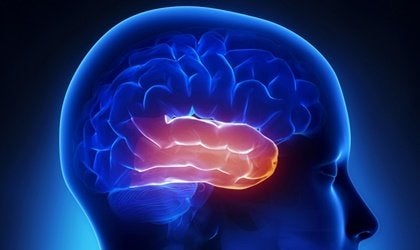Communicate effectively. Read and write. Remember a shocking kiss Experience sexual desire. Take care of our emotional stability, know what a book or elevator is for. Be emotional while watching a movie, all these processes and many others are regulated by a very specific area: the temporal lobe.
Heráclito said that nothing in nature is stable, that everything changes and that everything flows, including the tissues of our organism, however, there is one aspect that characterizes each of us: we feel that we remain the same.
- However.
- The cells of our tissues are not the only ones that change from time to time.
- The same goes for the brain and with each of our mental processes.
- With every learning.
- Every experience.
- Sensation and emotion.
Thus, however impressive it may seem, the temporal lobe is the area of our brain that most favors our changes, because through it we learn, remember, motivate, process information, establish emotional bonds in order to better adapt to our environment.
Great experts in the field, such as Francisco J. Rubia, doctor of medicine at the University of Dusseldorf and author of books like The Brain Deceives Us, what do you know about your brain?And the spiritual brain says that the wounds and disorders associated with the temporal lobe are the strangest and most striking.
“You don’t realize what exists, see what your brain is telling you?-David Eagleman, Incognito-
To locate the temporal lobe, it is necessary to visualize the area contained at the height of the ears. It is separated from the parietal lobe by the Silvio fissure and is, for many biologists, one of the newest parts of the brain; in fact, it only appears in vertebrates.
Similarly, like all other regions of the brain, it is not an anatomically isolated structure, it works with the other areas, but it could be said that it is a very dynamic, sensitive structure and in constant interaction with the senses and our environment.
In fact, and this fact is interesting, we are faced with the cerebral lobe that has the most connections with the limbic system, so it has a great responsibility in a lot of processes related to our emotions and our memory.
The temporal lobe, like all brain structures, has a right hemisphere and a left hemisphere. In addition, it has several structures with multiple interconnections that promote certain types of functions. The best known and studied are:
Let’s look at the details of where each of these processes takes place.
Do you perceive sounds, understand where they come from, identify musical sounds, communicate effectively and consistently?All these processes are mediated by the auditory cortex of the temporal lobe, a key area for human communication.
The visual cortex of the temporal lobe is involved in our ability to recognize objects, faces, as well as any visual stimulus, any change in this structure would certainly have serious effects, we have not been able to identify anything around us.
The Wernike region is located in the auditory cortex and plays a fundamental role: understanding spoken language; However, it should be noted that this structure only facilitates understanding; the ability to communicate after decoding a message occurs in the Broca area.
Read and write, decode symbols, understand them, link graphms to phonemes . . . All these refined and sophisticated processes require the ability to associate visual and auditory information, which occurs precisely in this area: angular rotation.
Touching an object and anticipating what we’re going to feel, or recognizing what it’s all about just the sensations it produces, caressing someone and experiencing a cluster of precious, pleasurable ???This type of experience is mediated by a structure as small as it is powerful: the supramarinal turn.
The parieto-temporo-occipital association area concerns the temporal, parietal and occipital lobe, this area of our brain is not yet well known, but we know to this day that it is related to the following processes:
This part of the temporal lobe is one of the most interesting and decisive in many of our social processes, here are some of the tasks you perform:
As we have already said, biologists and neurologists believe that the temporal lobe is one of the most recent structures of our brain, is it communication, reading, writing?
If we add to this the link with the most primitive part of our behavior, the limbic system, we will understand its great importance in terms of the number of diseases that can cause brain damage or alterations in this area.
For example, one of the most recent studies, conducted by the Brain Metabolism Unit at The Royal MRC Hospital in Edinburgh, indicates that people with deep depression have several changes in the temporal lobe.
Let’s see what other implications we have with a problem in this area of the brain:
In conclusion, the temporal lobe performs, as we see, infinite tasks that allow us to be who we are, people who adapt to their environment and who also perform the most different functions of our species: communication, writing and reading.

